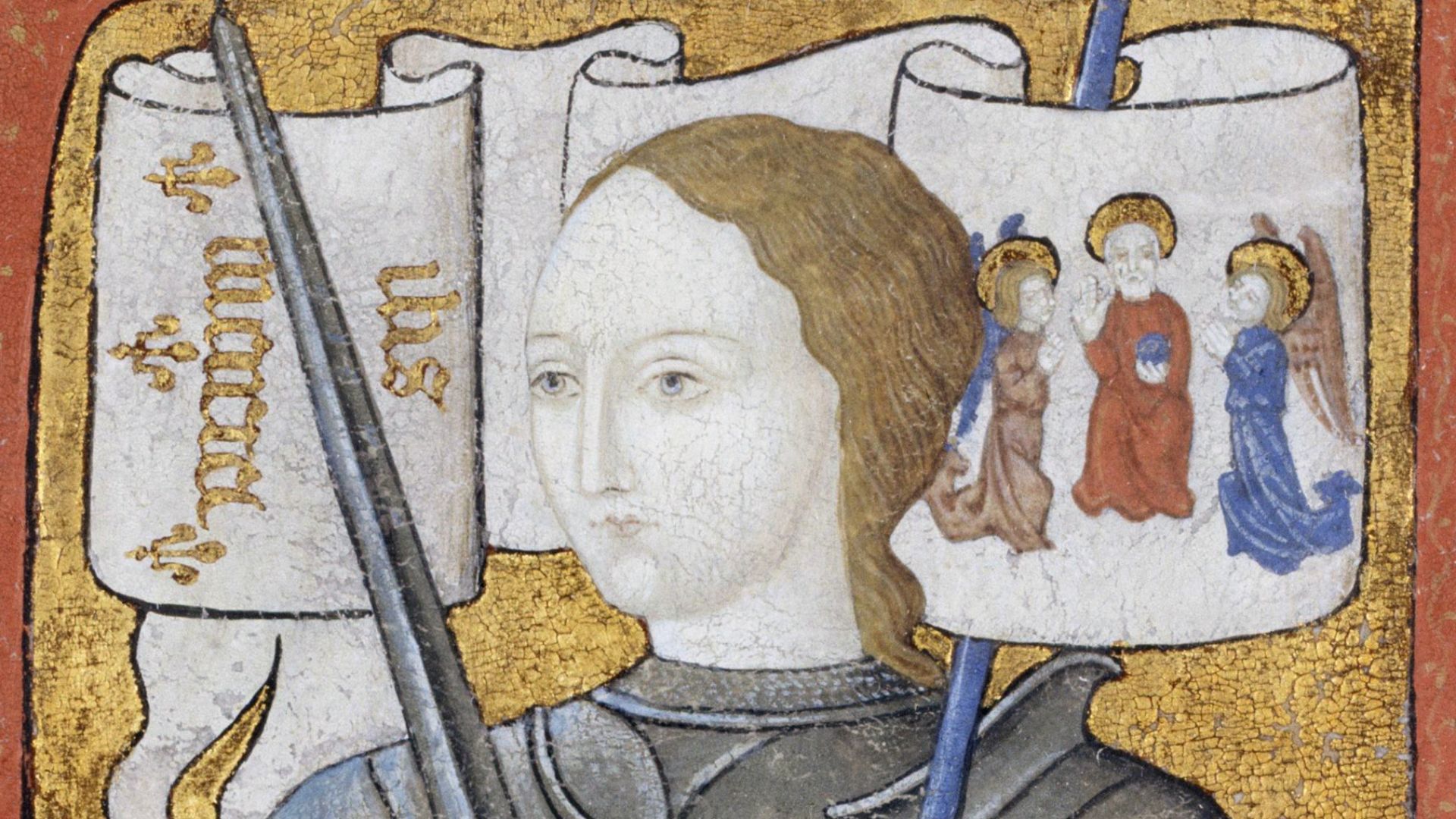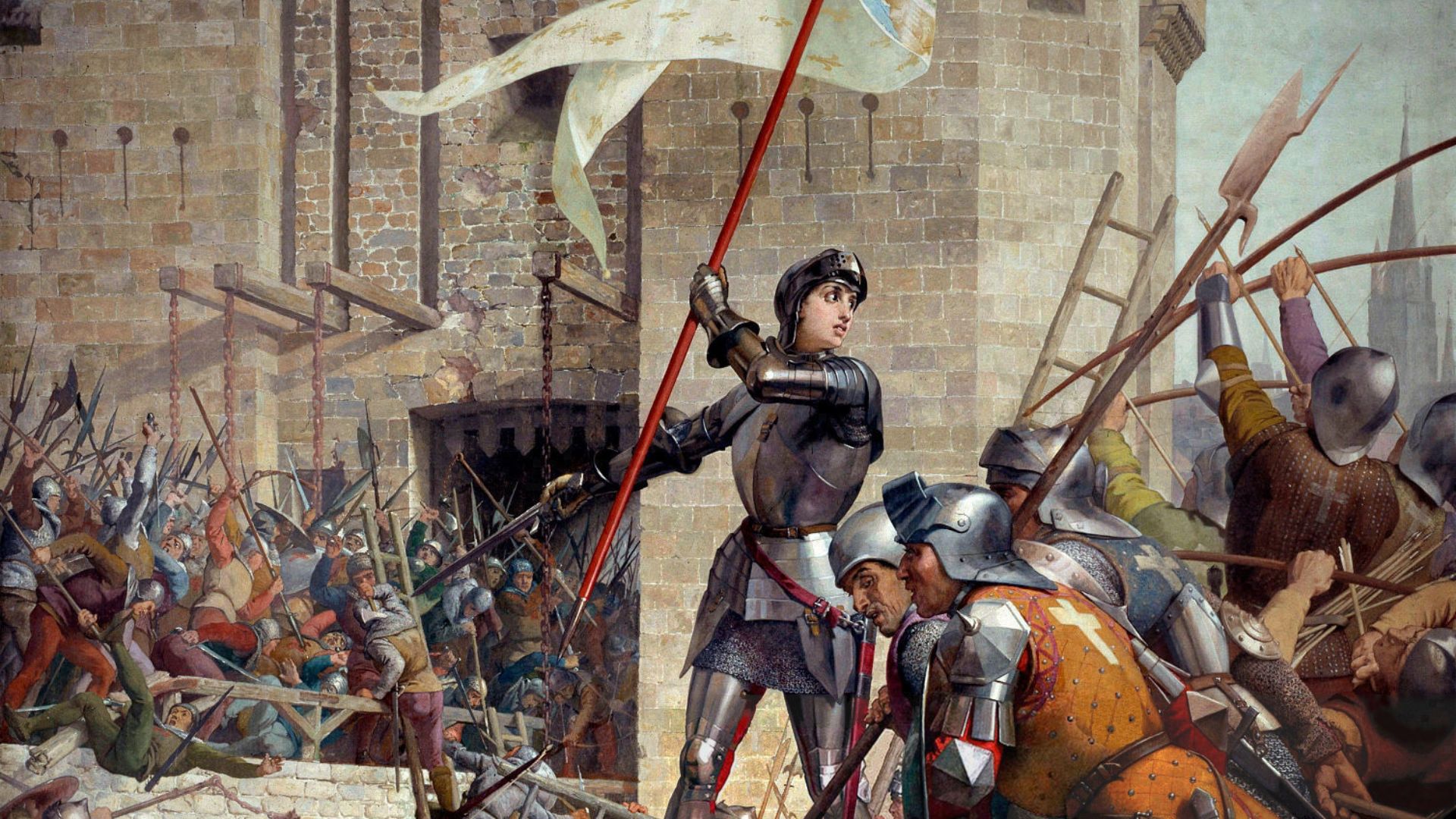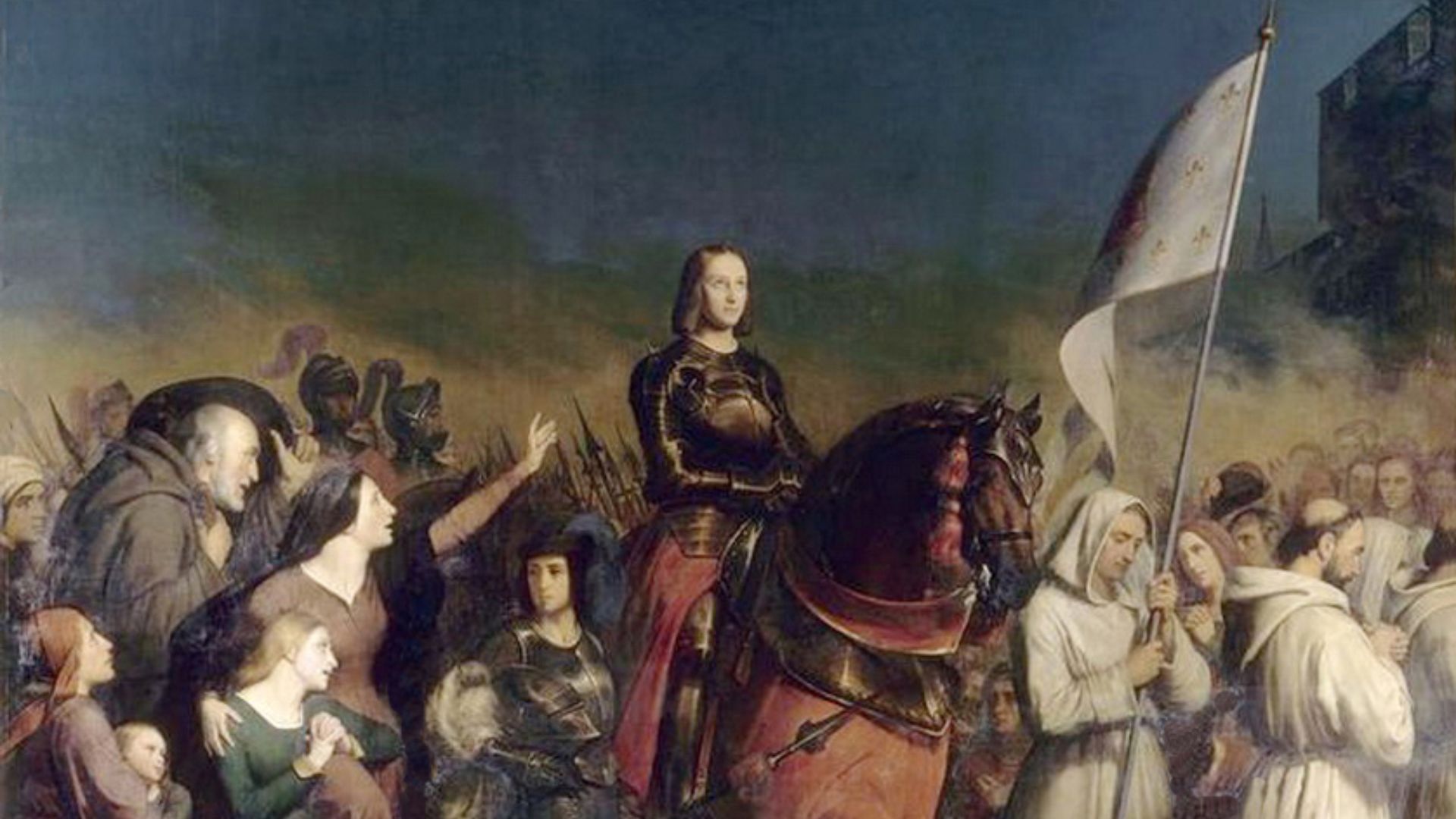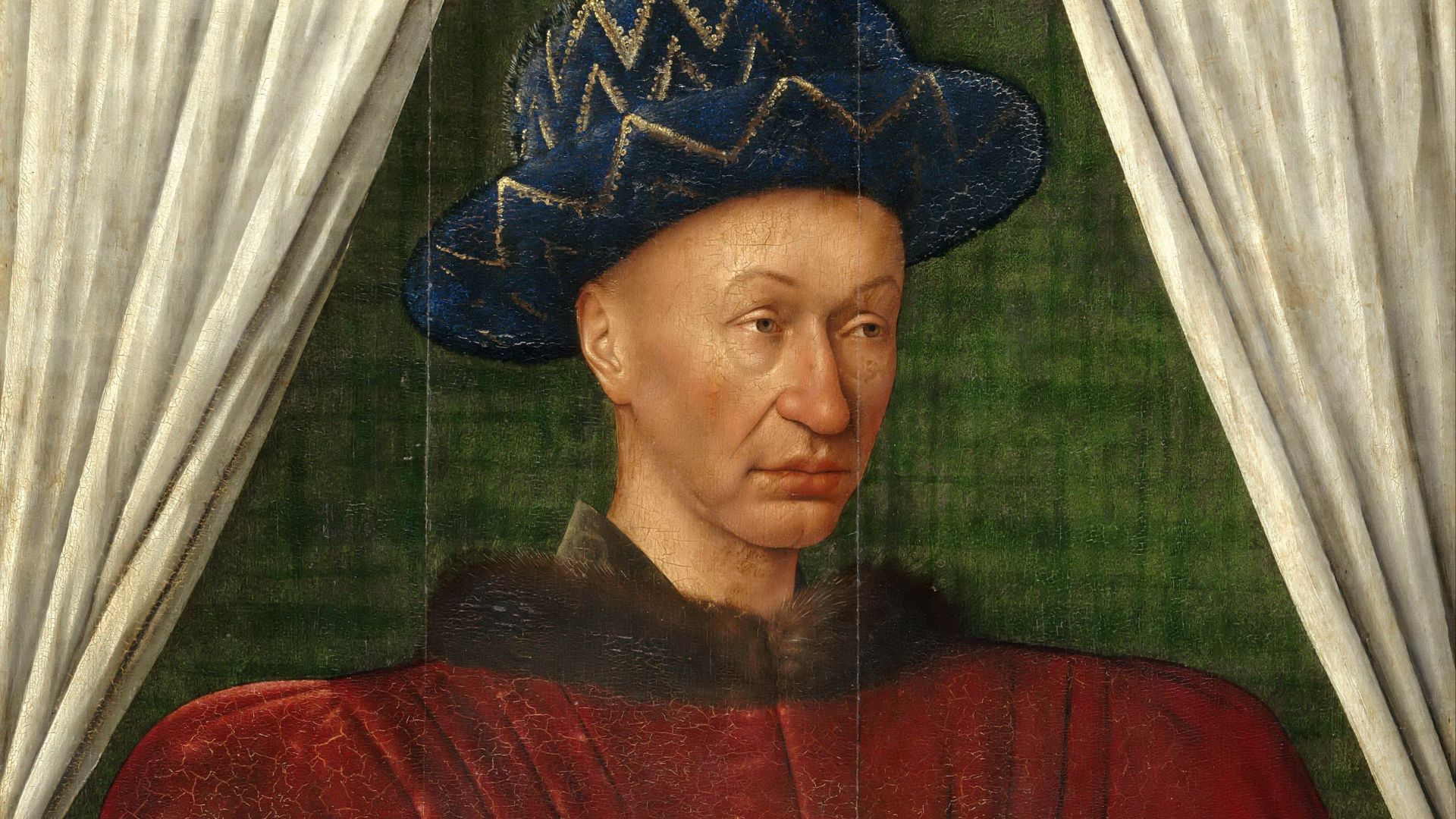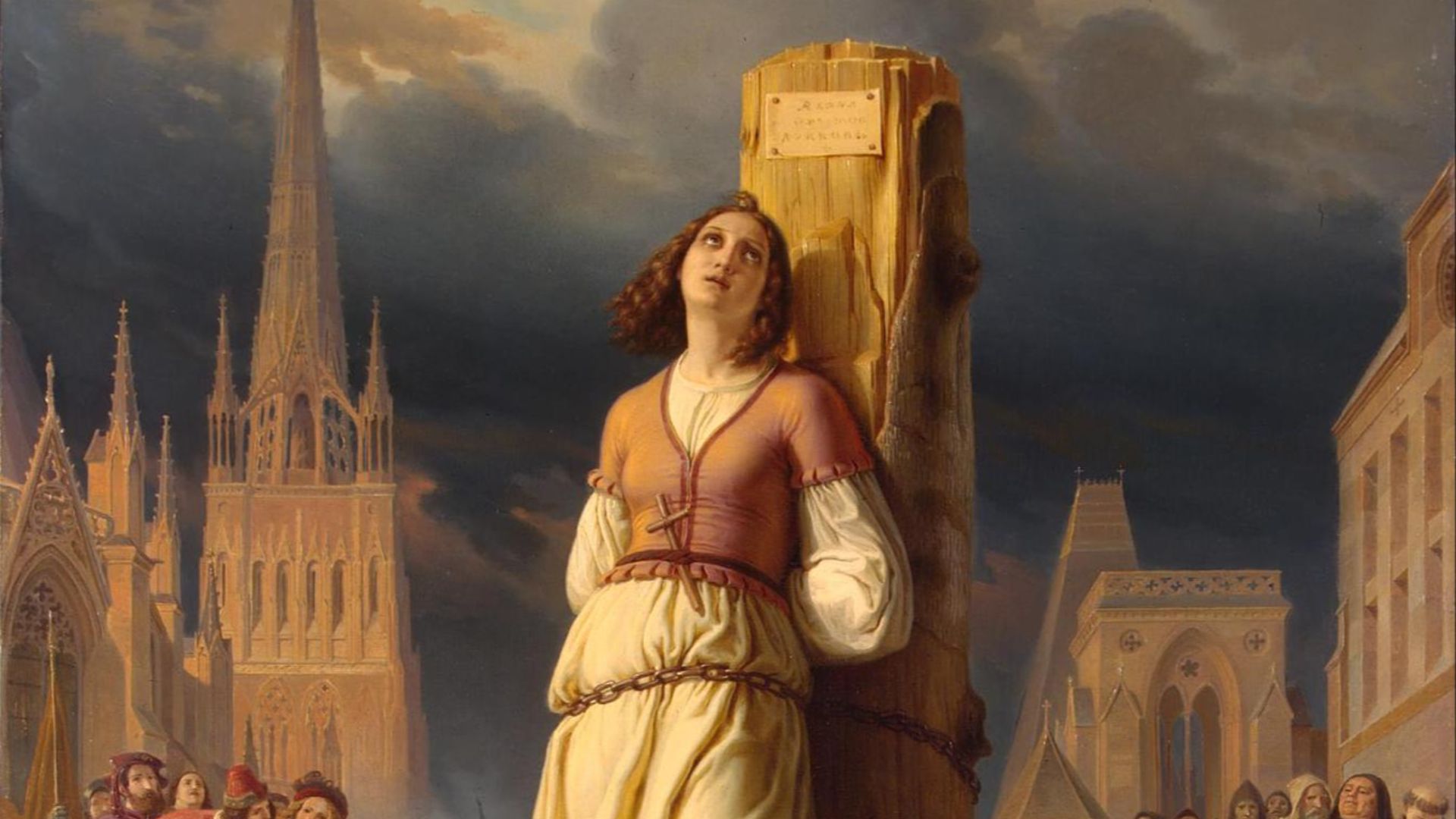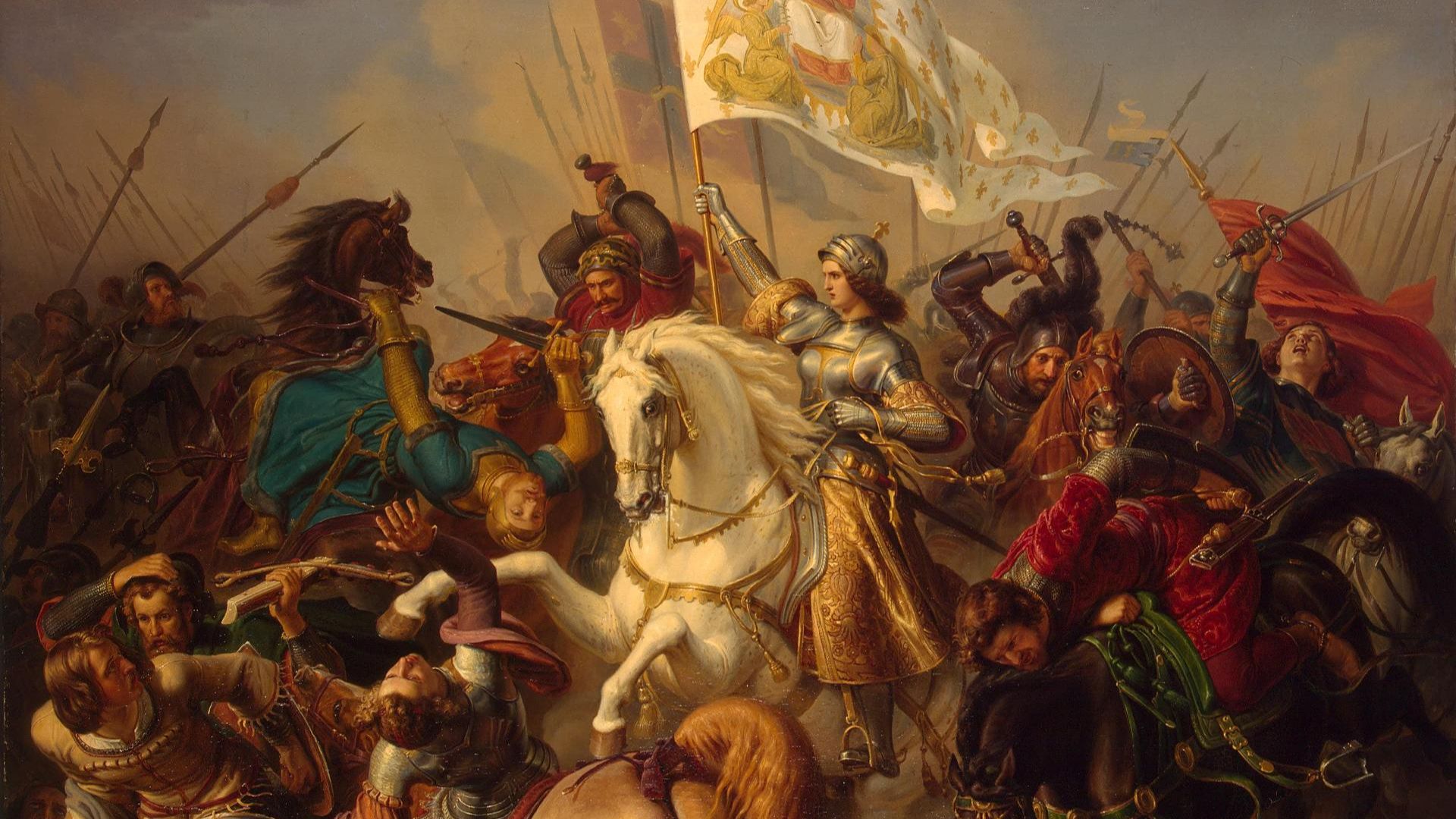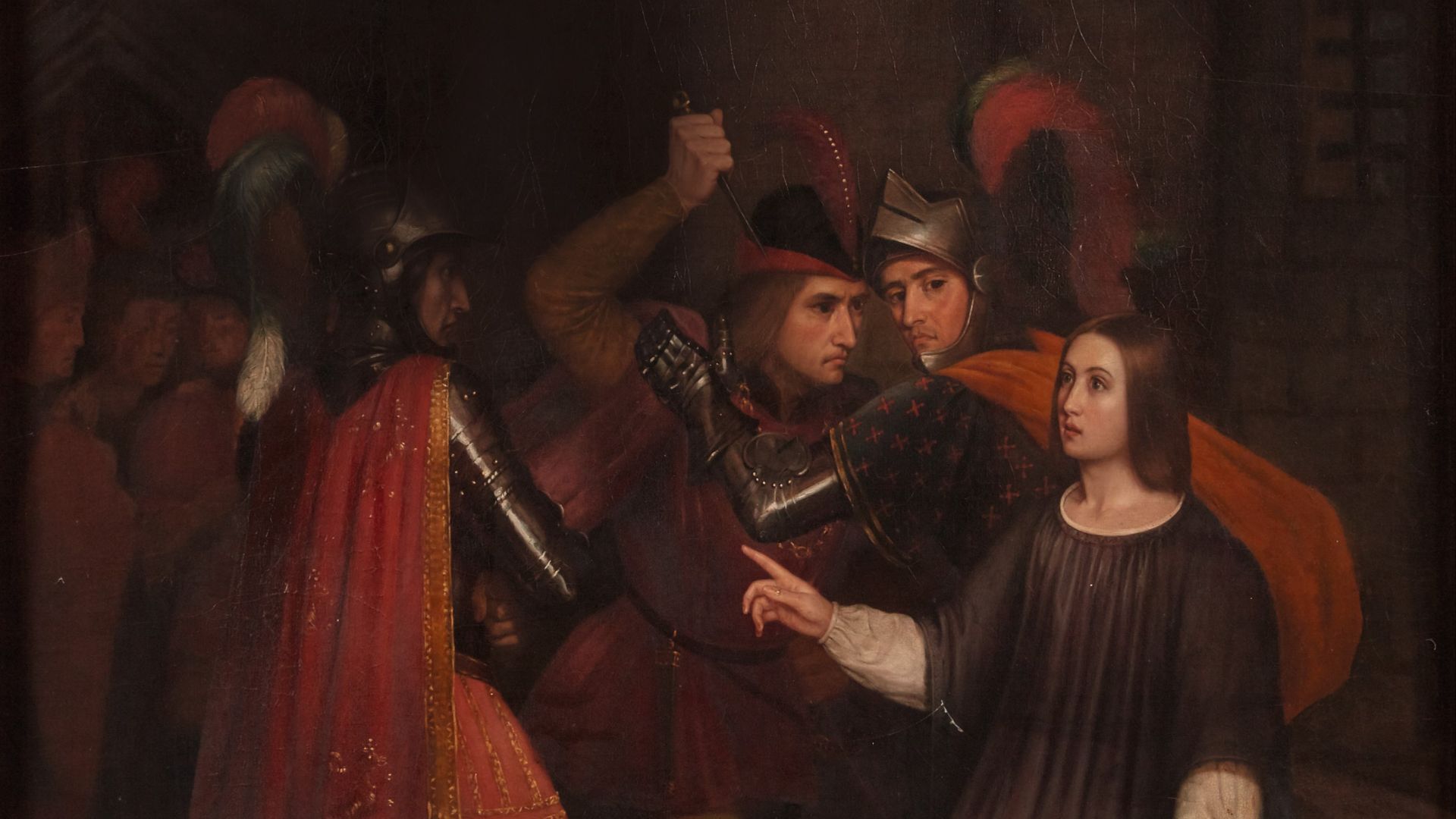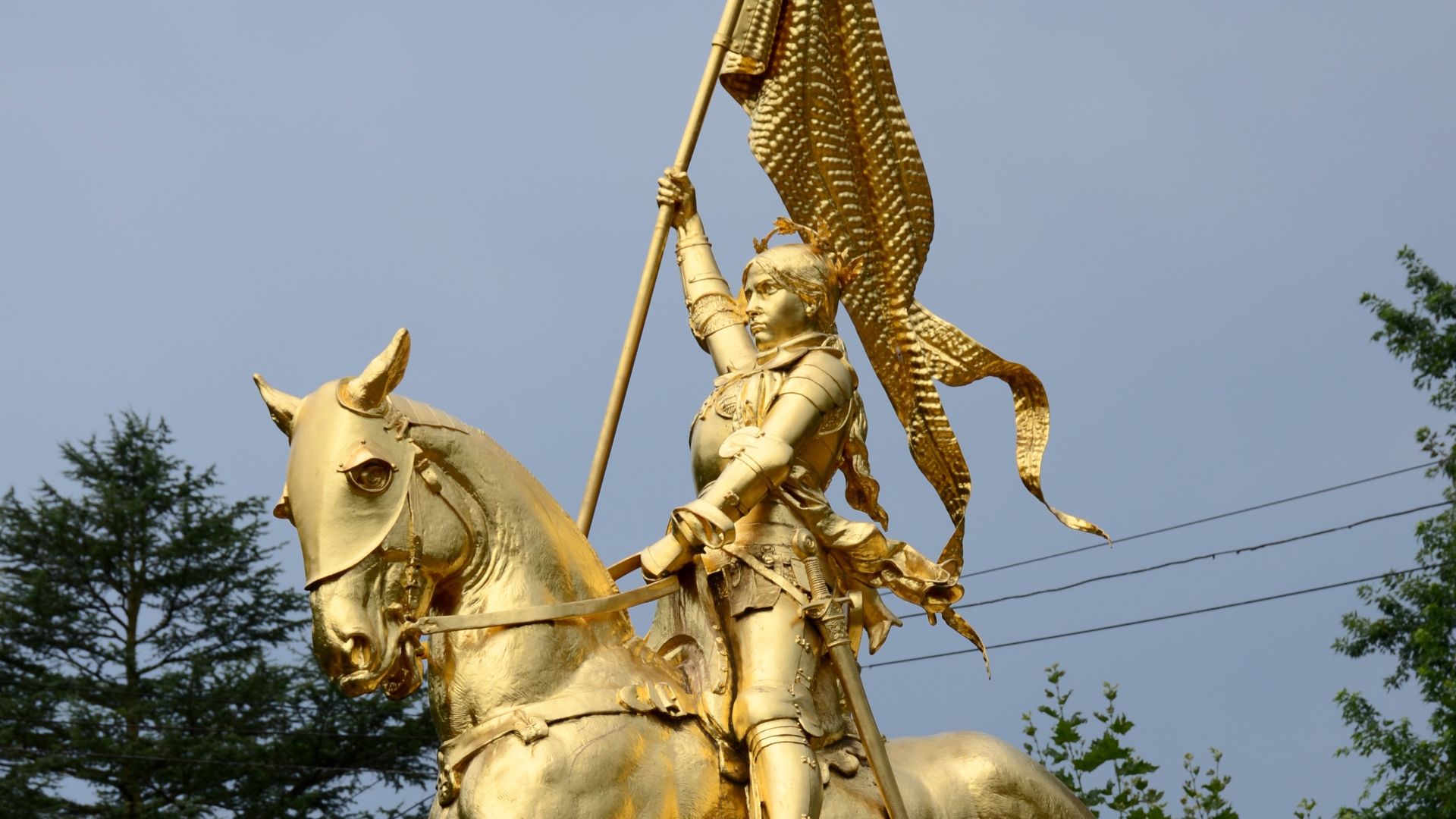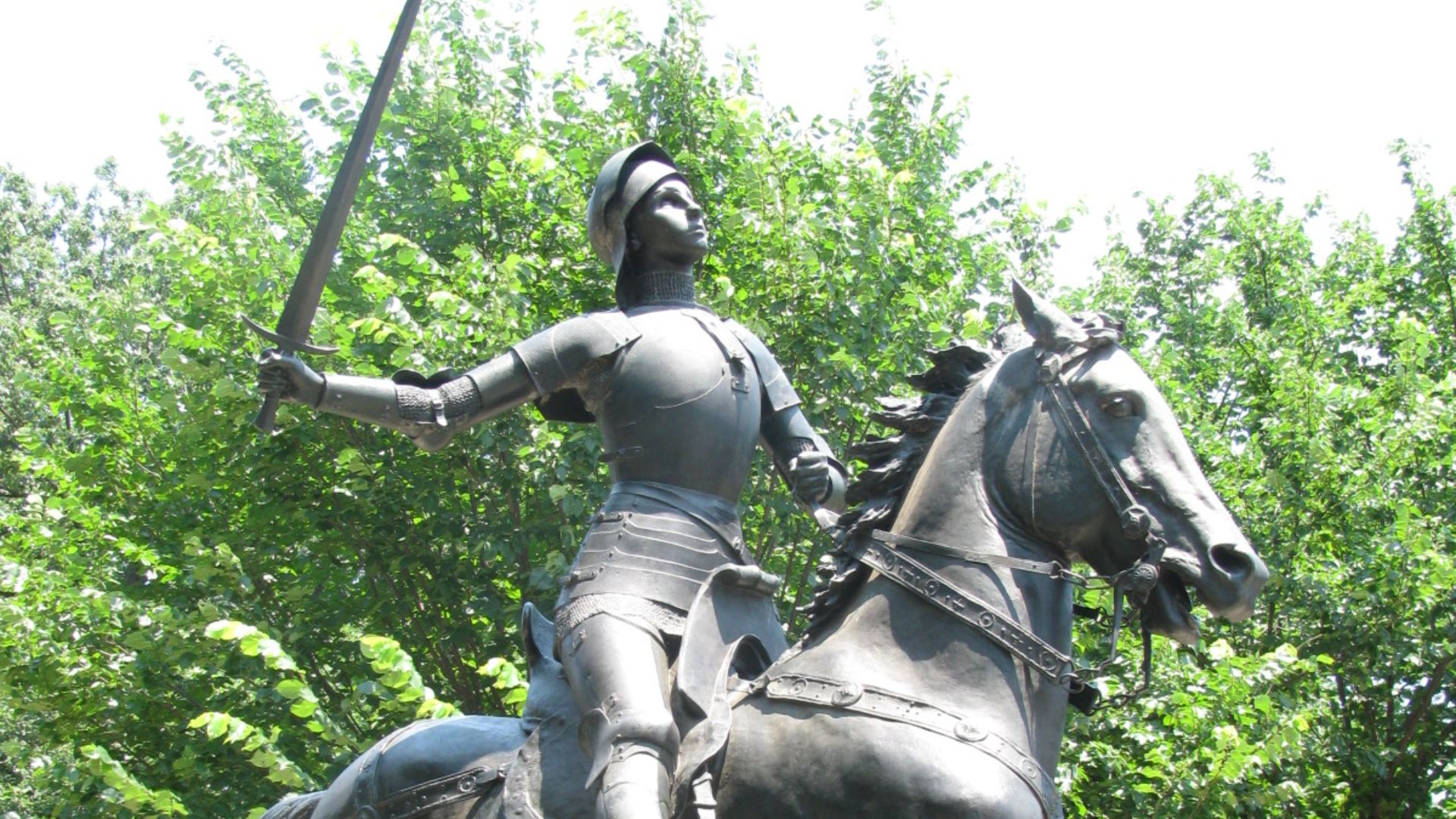The Girl Who Wanted to Save France
You’ve undoubtedly heard the name before—it’s hard not to with such an incredible story and hundreds of pop culture references. But how much do you really know about this beloved heroine? Here are 20 facts about this unlikely leader.
1. She Was Born During a War
Joan was born in 1412 in the small town of Domrémy during the Hundred Years’ War, a tumultuous time for the English and French as they battled for land and the throne. Historians know that her father was a tenant farmer and that she had several siblings, but details remain unclear about her exact birth date, her age, and even what her name was.
2. She Was a Girl With Many Names
We know her as “Joan of Arc,” but the young heroine actually went by multiple names. She signed her letters with “Jehanne la Pucelle,” and it’s still unclear what her surname was. Even in France today, she isn’t known as Joan of Arc but as Jehanne.
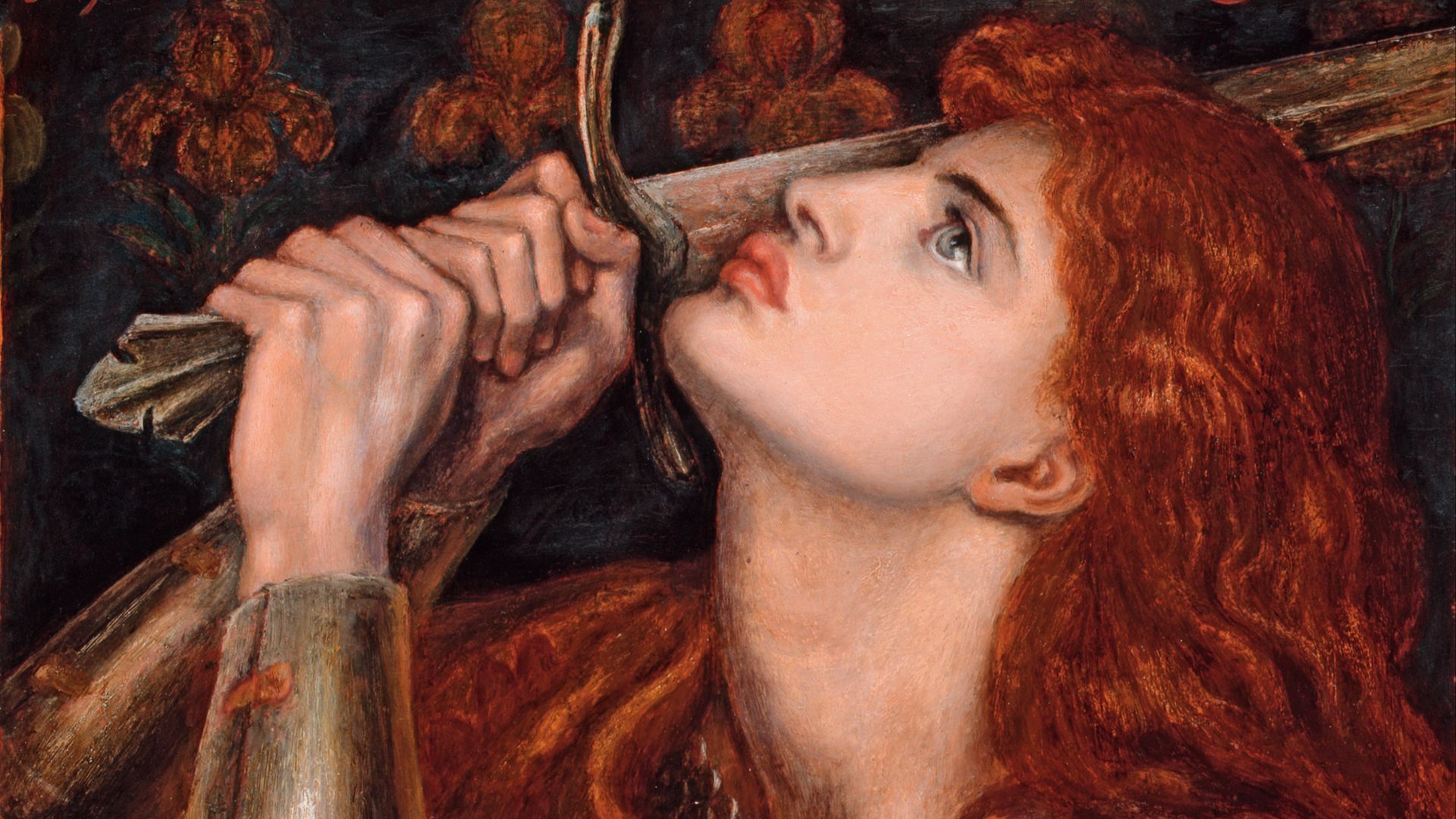 Dante Gabriel Rossetti on Wikimedia
Dante Gabriel Rossetti on Wikimedia
3. She Was an Unlikely Leader
No one could have predicted her future. Despite her accomplishments later in life, Joan was an unlikely leader who couldn’t read or write (except to sign her name). She had no battlefield experience and almost missed her chance to speak with Charles VII at all, thanks to the voices she often heard.
 John Everett Millais on Wikimedia
John Everett Millais on Wikimedia
4. She Had Early Childhood Visions
How do you ignore callings from Saint Michael? How do you turn away from St. Margaret and St. Catherine? Joan never did. Her first vision of Michael appeared in 1425 when she was only thirteen years old, and she later testified that it was indeed the patron saint of Domrémy who visited her. It wasn’t long before visions of Margaret and Catherine also appeared.
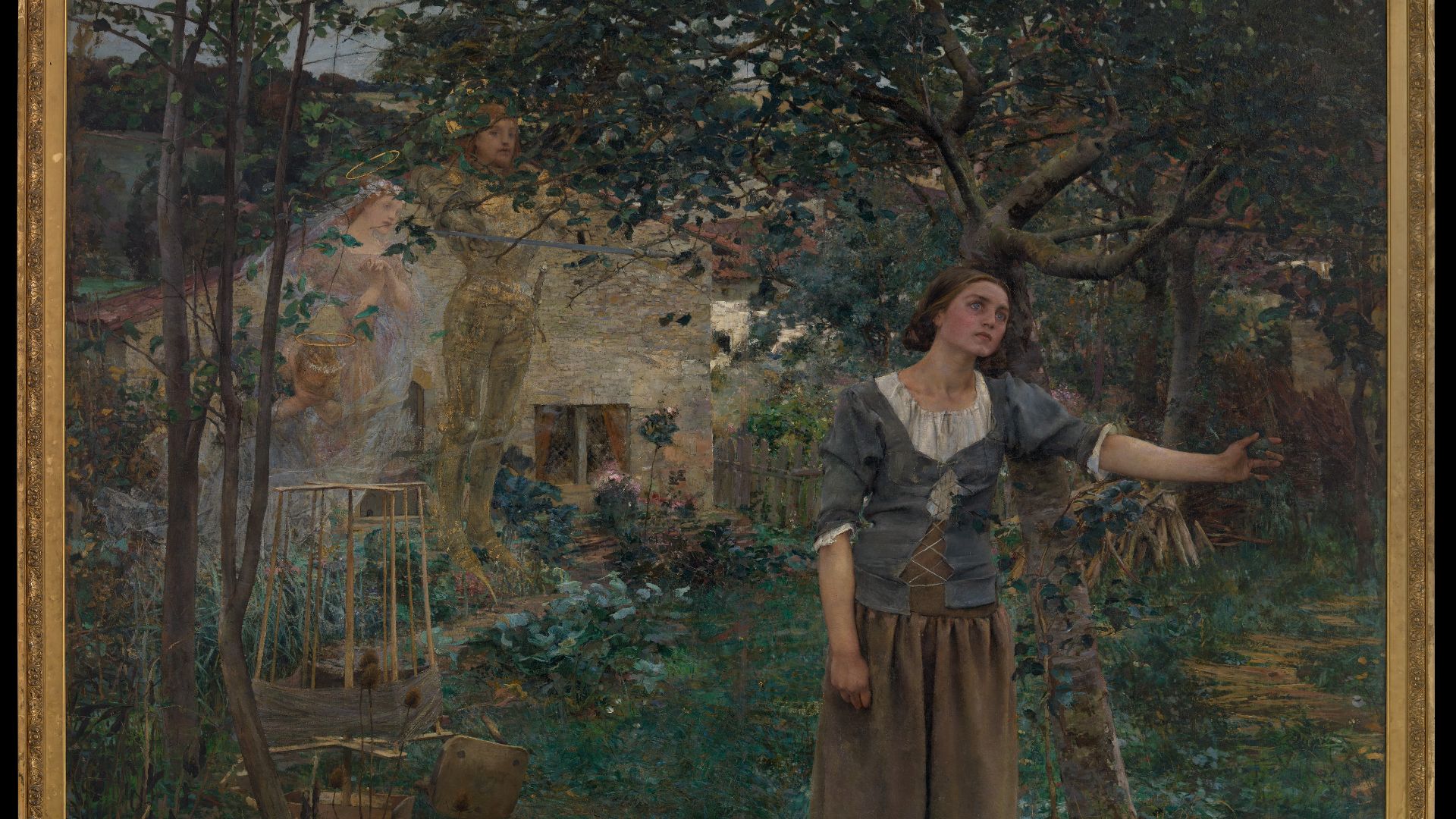 Jules Bastien-Lepage on Wikimedia
Jules Bastien-Lepage on Wikimedia
5. She Had a Self-Fulfilling Prophecy
Those visions weren’t the only driving force behind Joan’s mission. In 1428, prophecies of a young woman sprouted in her little town, each claiming a maiden would save France. Joan believed herself to be that woman, headstrong in her duty to meet Charles VII, make him king, and liberate the country.
6. She Fought to Save France
That year, she traveled to the nearby town of Vaucouleurs, the closest stronghold still loyal to Charles VII. However, her audience with the garrison’s captain didn’t go well and he rejected her request to visit the court at Chinon. She revisited in 1429, but he rejected her again—until he was coerced by his soldiers, several of whom started to support her, to let her through.
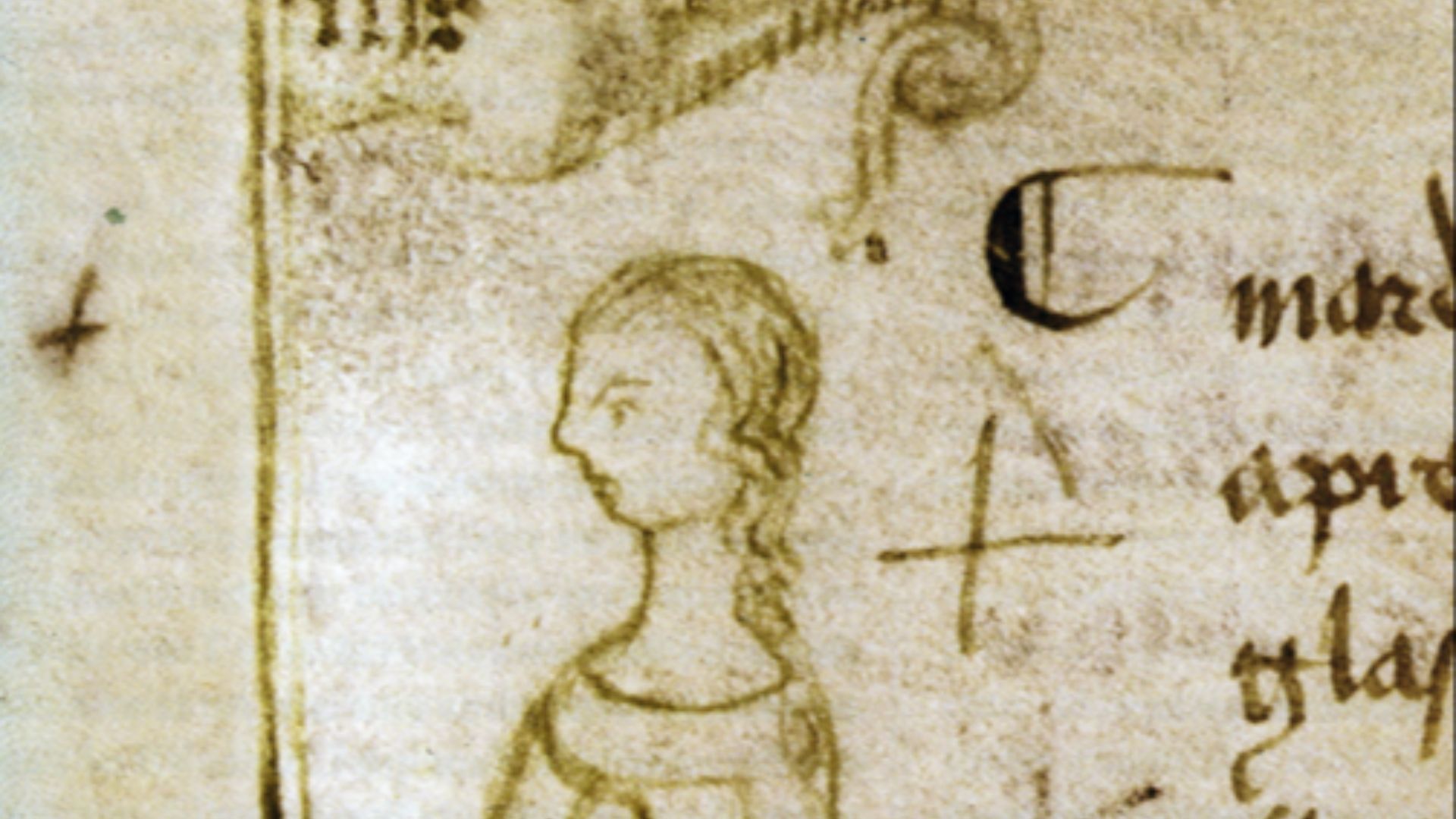 Clément de Fauquembergue on Wikimedia
Clément de Fauquembergue on Wikimedia
7. She Went Through Weeks of Interrogation
She may have gained an audience with Charles, but that doesn’t mean things improved. After an eleven-day journey to Chinon, the dauphin only received her two days later, putting her through rigorous interrogations and various tests to prove her validity. Which she did, time and again, eventually earning his favor and the respect of the people.
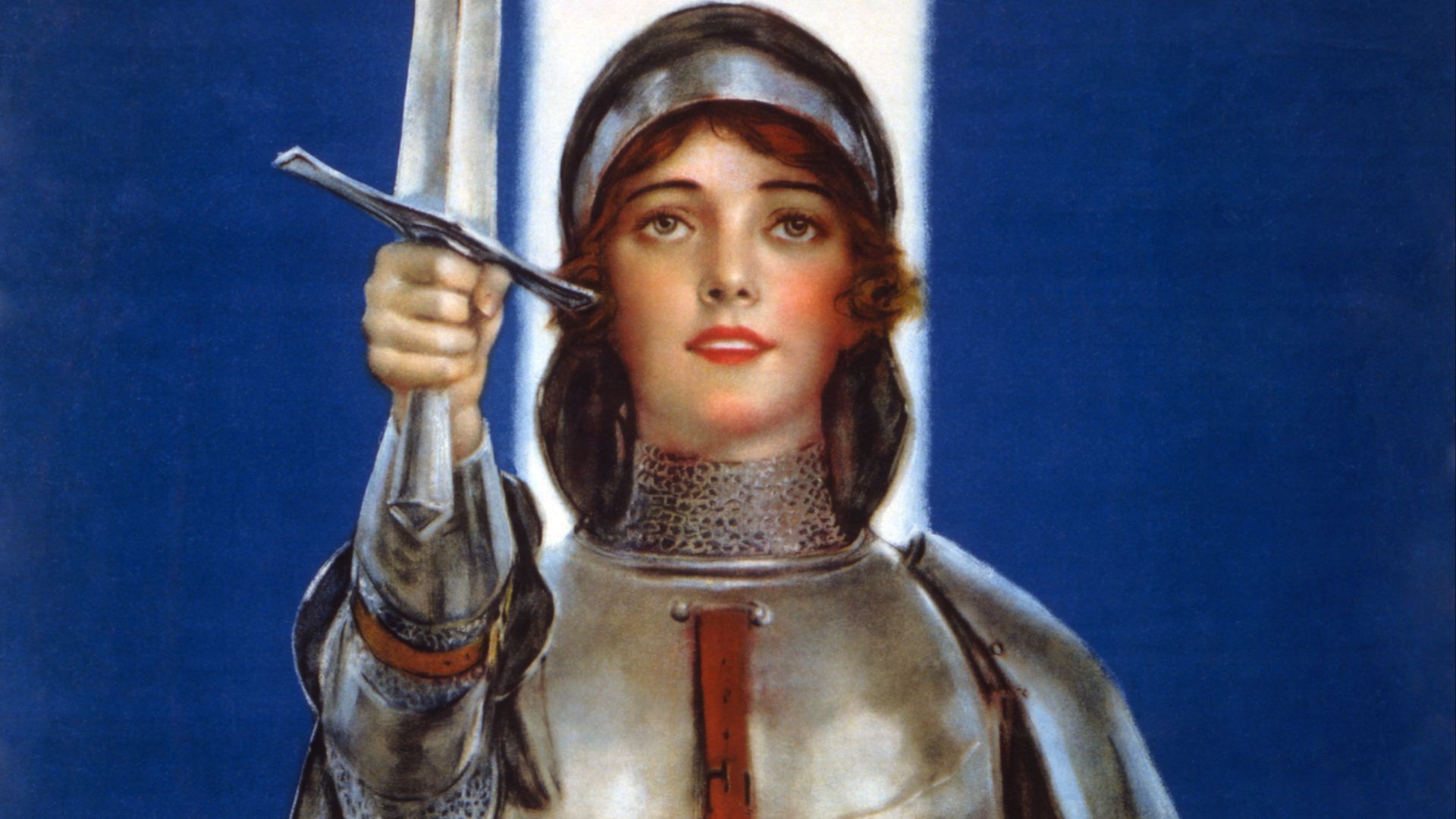 William Haskell Coffin on Wikimedia
William Haskell Coffin on Wikimedia
8. She Rallied an Entire Army
In 1429, she was sent as part of a supply army to Orléans. She was greeted with plenty of enthusiasm and the band of newly rallied troops sent her to fly her banner on the front lines without actually fighting; that very encouragement finally helped bring the siege of Orléans to an end.
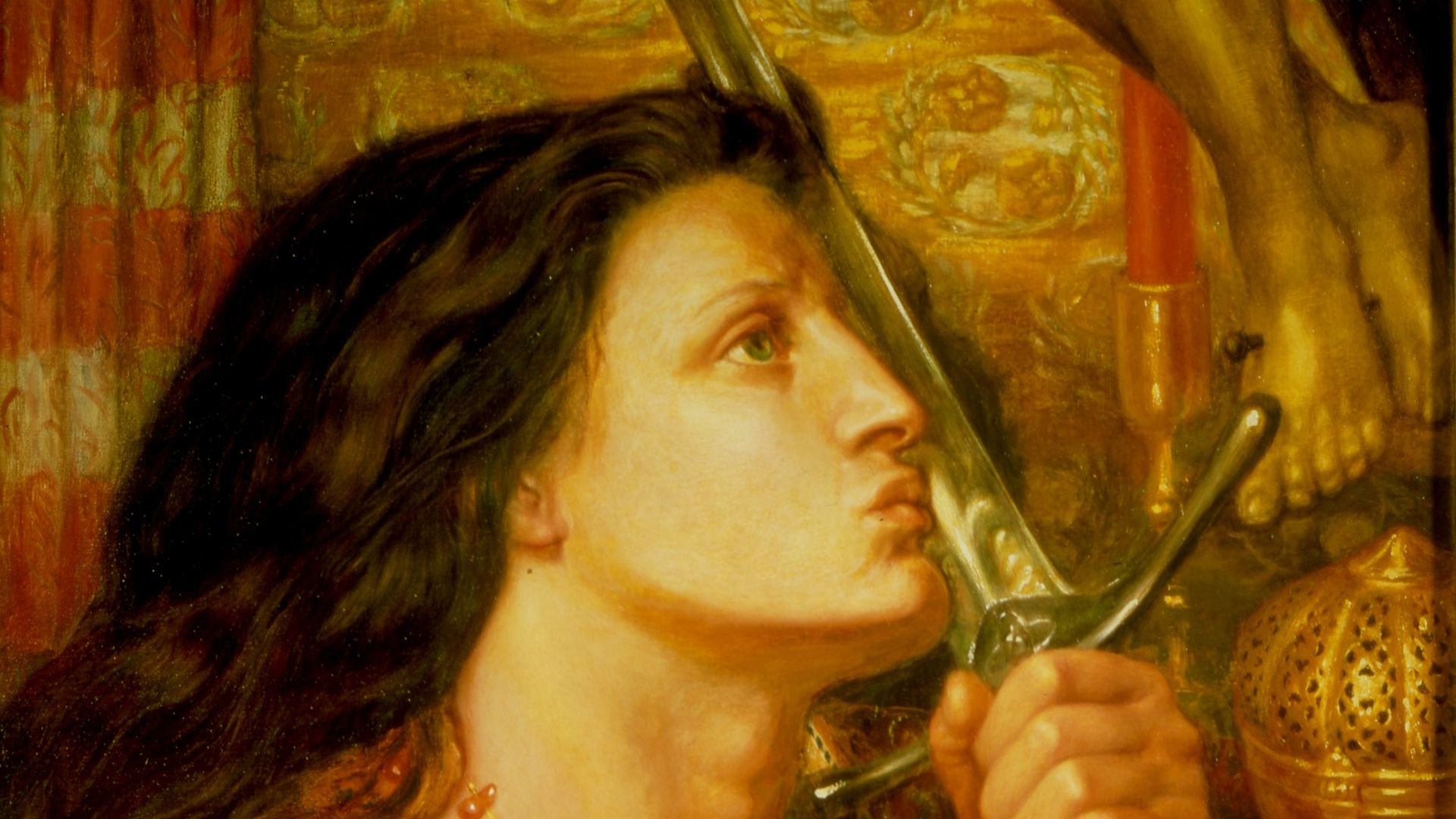 Dante Gabriel Rossetti on Wikimedia
Dante Gabriel Rossetti on Wikimedia
9. She Earned the Name “Maid of Orléans”
In May 1429, Joan and her trusty banner aided the Armagnacs in taking over the fortress of Saint-Loup, even as the men tried to retreat. But she convinced them to stay, encouraging them to keep fighting and not only take the fortress, but to successfully fight for Saint-Jean-le-Blanc, les Augustins, and les Tourelles. In four days, with the help of Joan’s motivation, the English retreated and the siege finally ended.
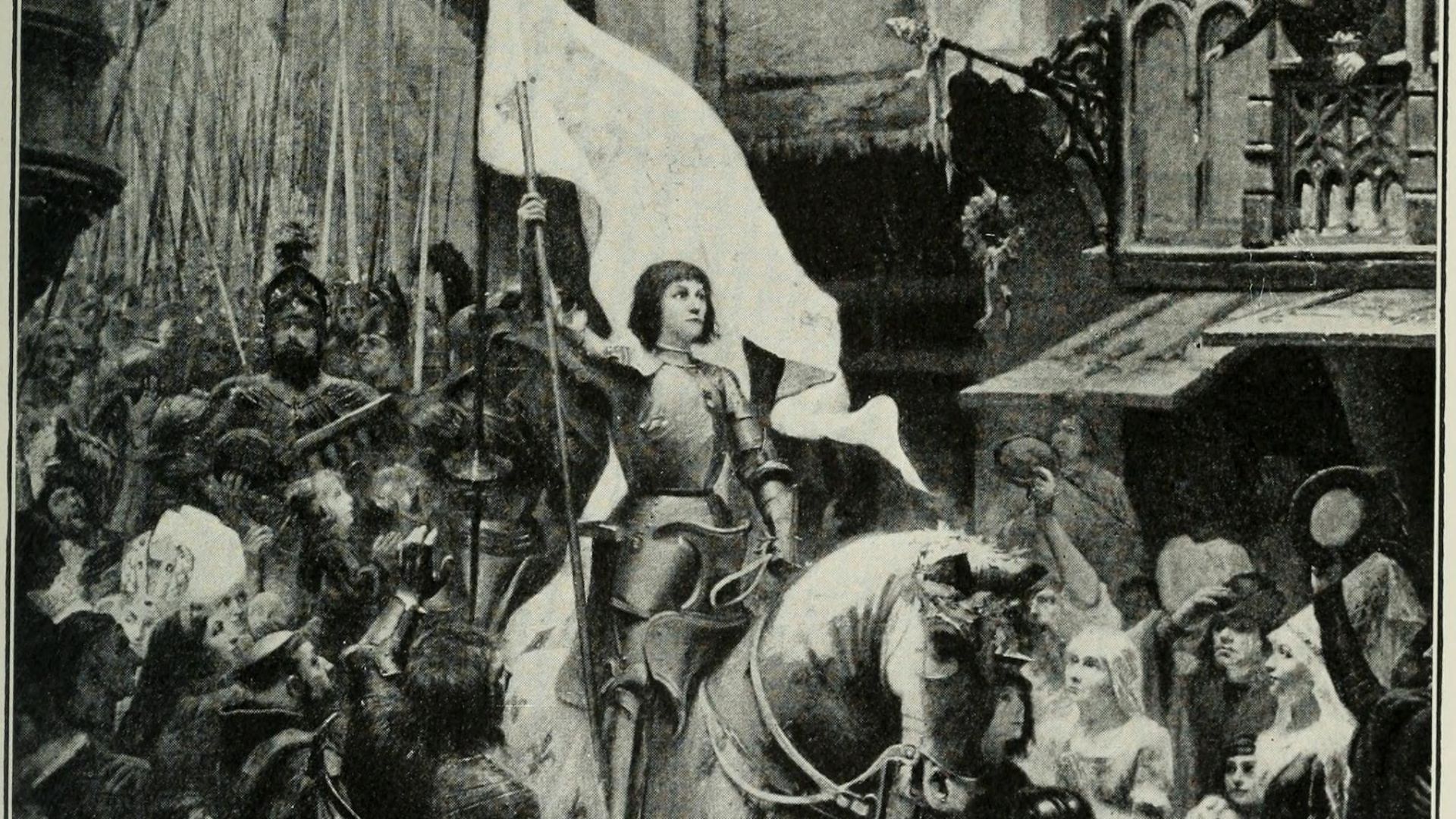 Internet Archive Book Images on Wikimedia
Internet Archive Book Images on Wikimedia
10. She Was Behind the Scenes During The Battle of Patay
With Charles one step closer to the throne, Joan and his armies still had to recapture three bridge towns along the Loire—which they did in just a few days, between June 11 and 18. June 18 would, in fact, mark another turning point for the French during the Battle of Patay, a major defeat for the English that ended with the majority of their leaders captured and thousands of men dead. While Joan technically wasn’t present, her encouragement behind the scenes helped rally the victory.
 Attributed to Philippe de Mazerolles on Wikimedia
Attributed to Philippe de Mazerolles on Wikimedia
11. She Helped Make Charles VII King
The path to Reims was officially clear, ushering in a new king on July 17, 1429. Joan was given special honor during Charles VII’s coronation, and it seemed like the tables started to turn—and they did, just not in the way Joan hoped. By the end of the year, she would soon lose all reputable power.
12. She Nearly Lost All She Worked For
After Charles was crowned king, Joan still played a role with the Duke of Alençon to take back control of Paris from the Duke of Burgundy. However, attempts to reclaim it went terribly, resulting in over 1,000 casualties for the Armagnacs and Joan’s dwindling impact on the people and the court.
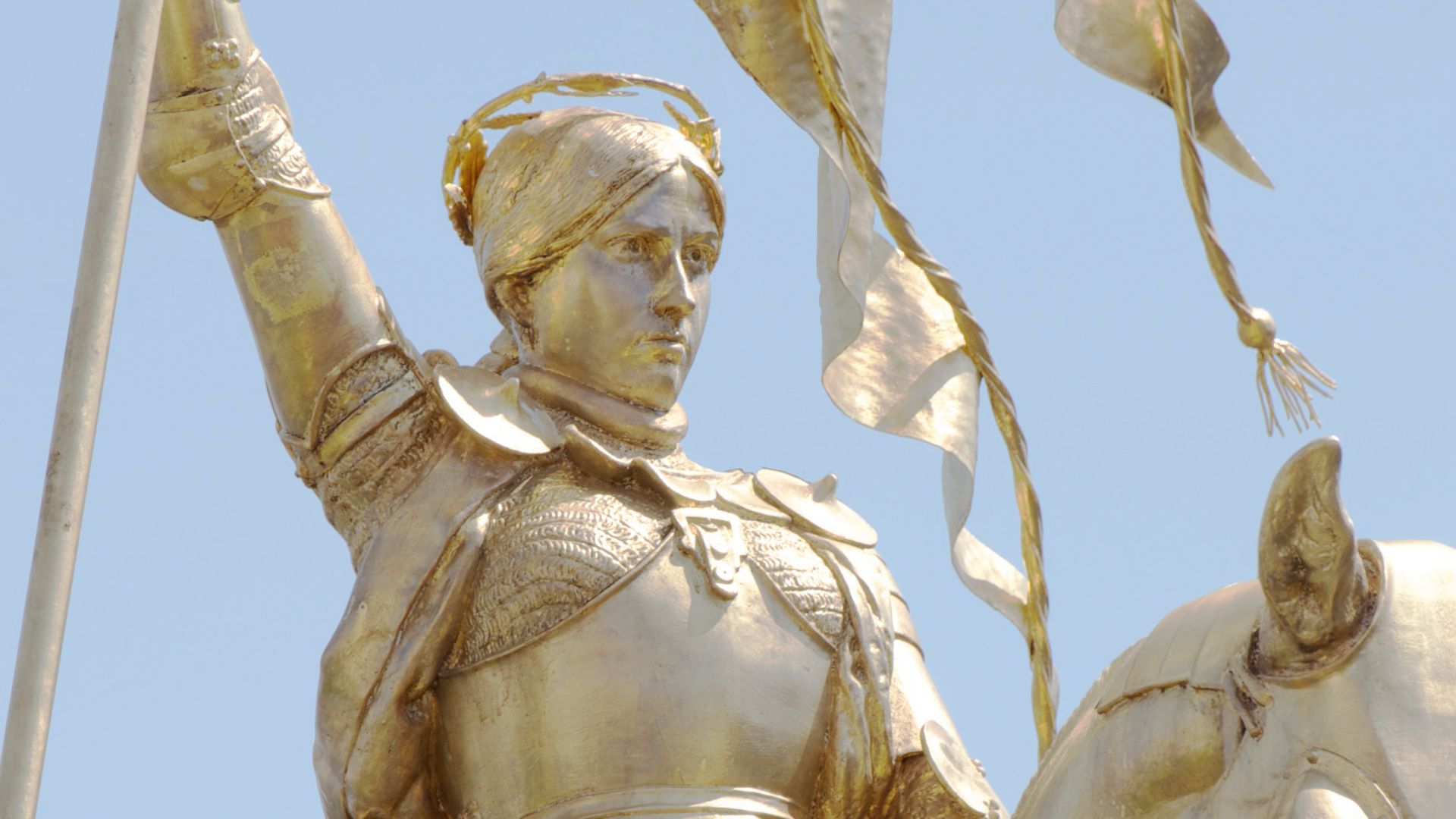 Tim Wilson from Blaine, MN, USA on Wikimedia
Tim Wilson from Blaine, MN, USA on Wikimedia
13. Her Triumphs Were Cut Short
In May 1430, Joan was part of another unsuccessful attack against an English camp in Margny—one that resulted in her capture. For months she was kept in various holding cells and made several unsuccessful attempts to escape, but by November 1430 she was brought to trial in Rouen.
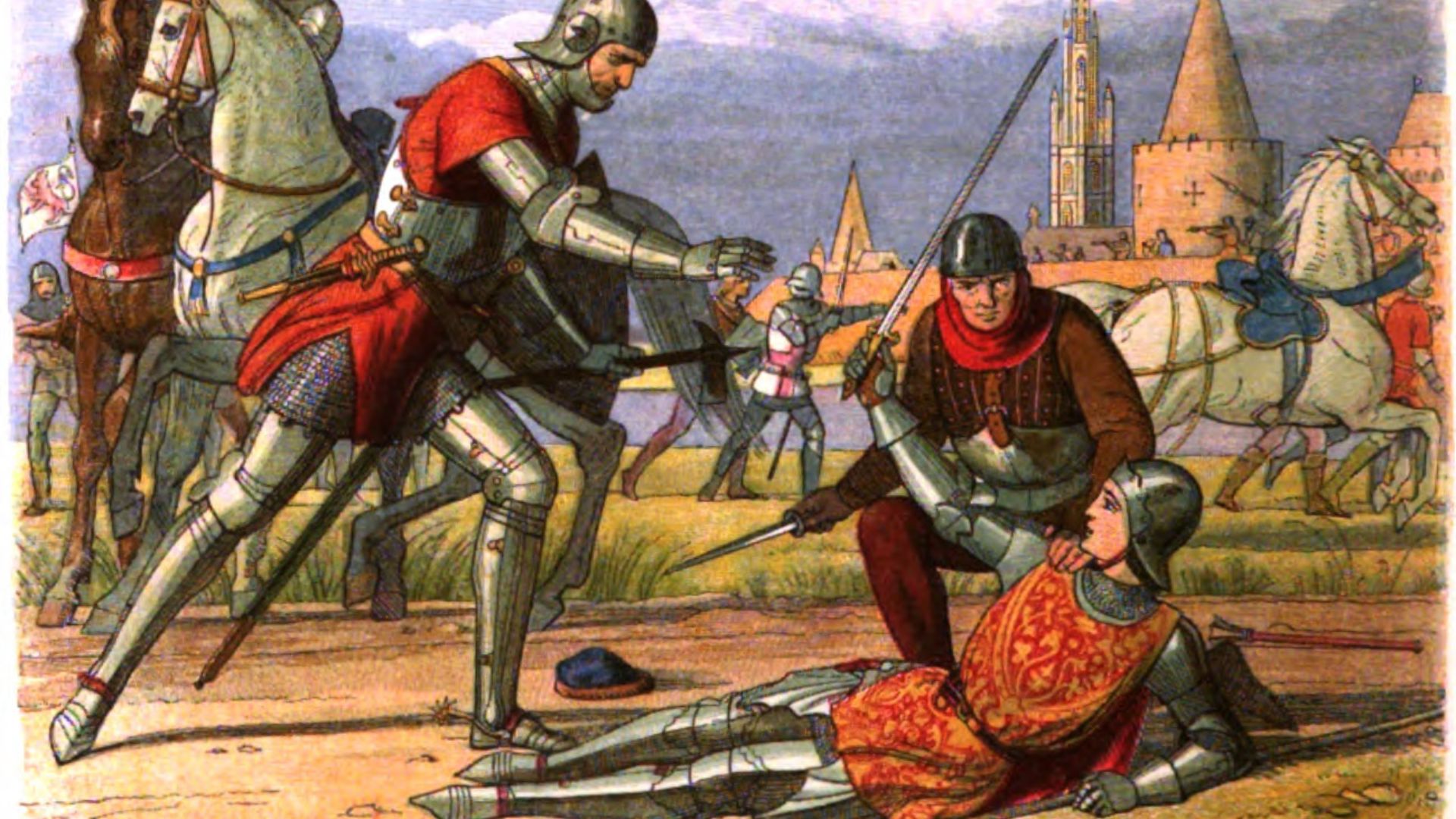 James William Edmund Doyle / Edmund Evans on Wikimedia
James William Edmund Doyle / Edmund Evans on Wikimedia
14. She Was Charged With 70 Crimes
Among many things, Joan faced 70 charges that ranged from heresy, witchcraft, and dressing in men’s clothes. It took two days to read them in court. She remained calm during her trial, answering questions eloquently and appropriately, and was officially admonished in May 1431. She signed an abjuration document forbidding her to wear men’s clothes or bear arms, which she signed.
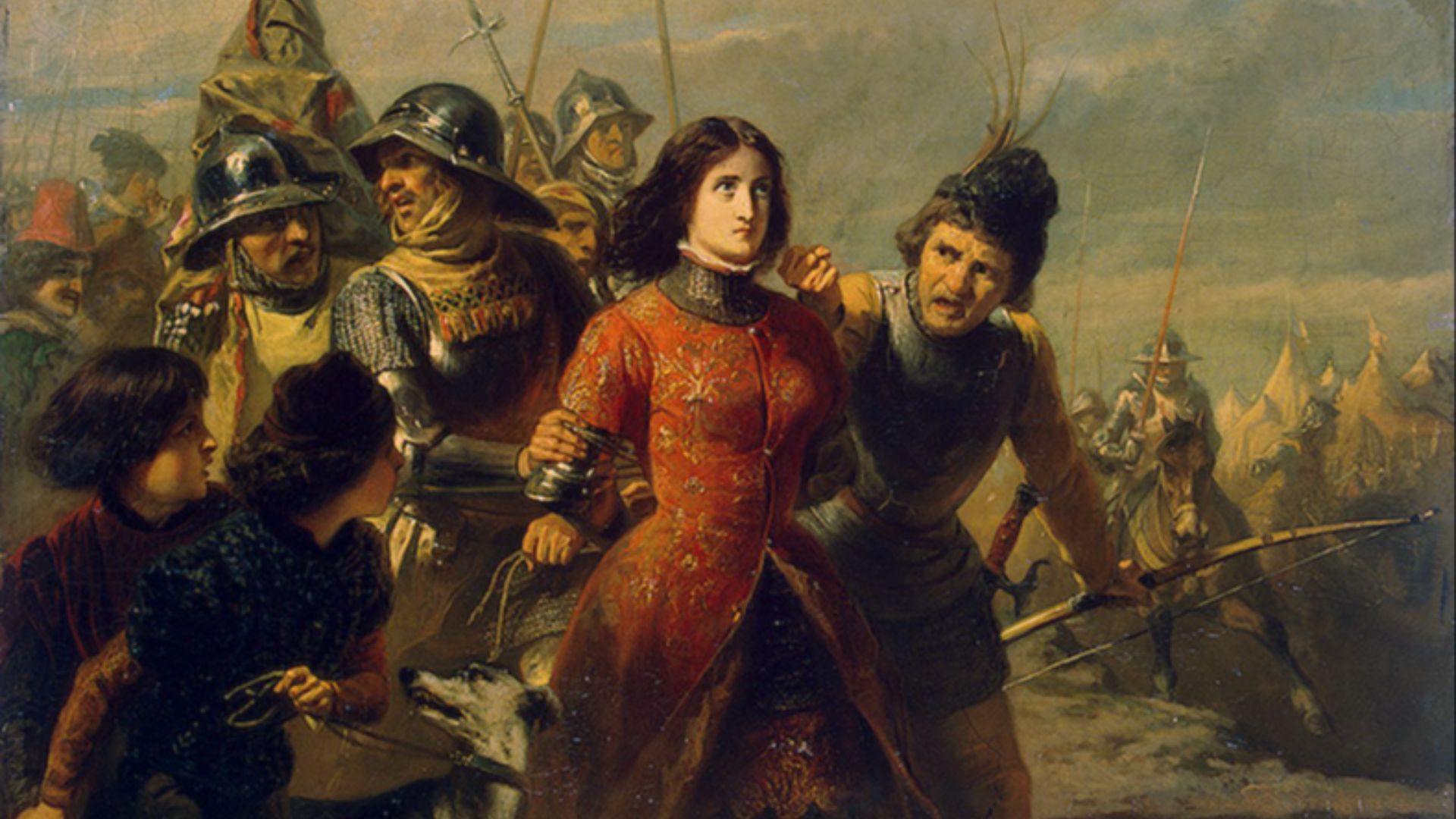 Adolf Alexander Dillens on Wikimedia
Adolf Alexander Dillens on Wikimedia
15. She Was a “Relapsed Heretic”
Despite signing the document, Joan quickly went back to her old ways. She donned men’s clothes again, telling visiting clerics that it was only right to wear them if she was being guarded by men. She had visions again too, and told clerics that they shamed her for abjuring out of fear and that she wouldn’t turn away from them again. Both statements were enough to classify her as a “relapsed heretic” and seal her fate.
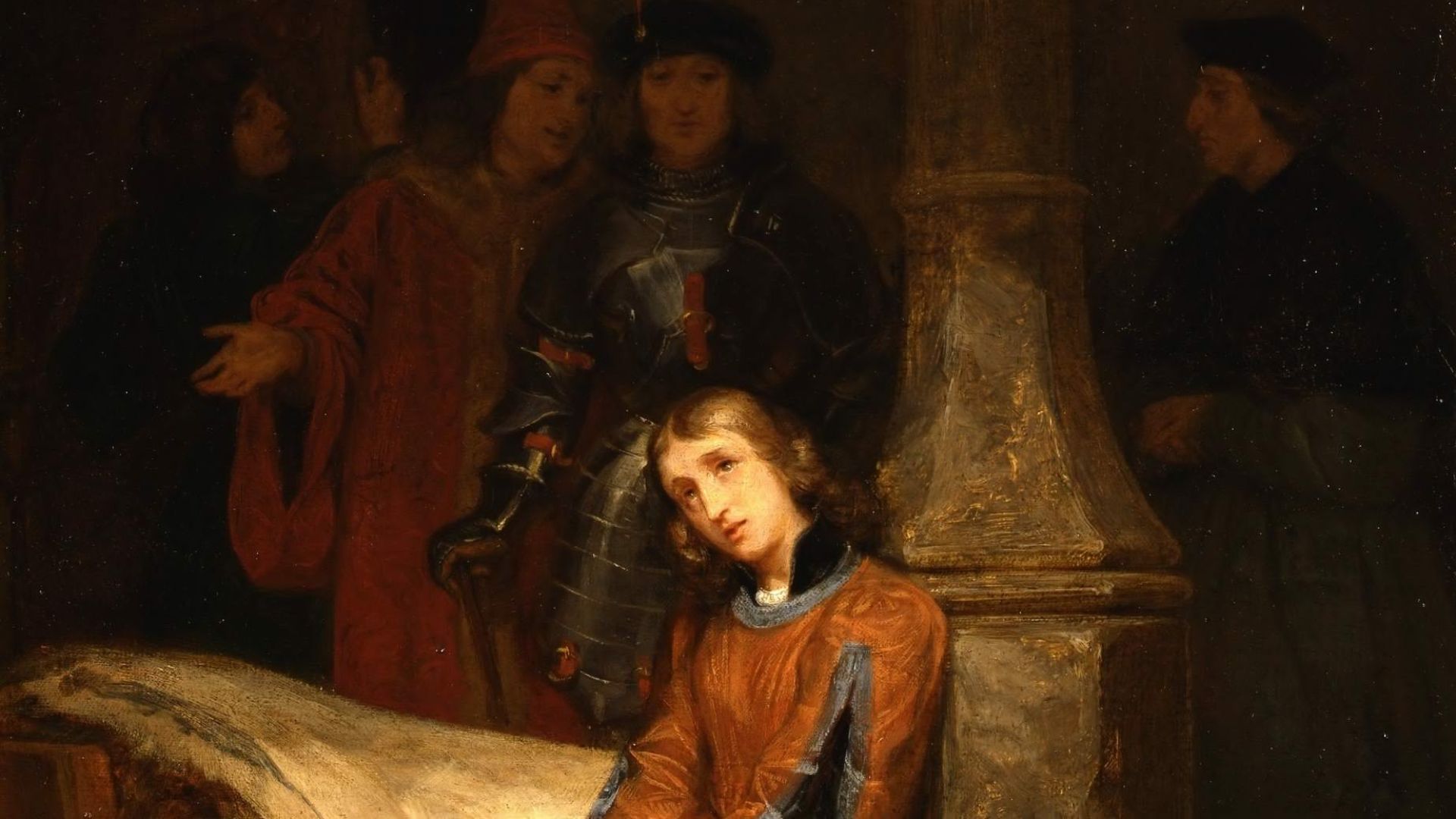 Gillot Saint-Evre on Wikimedia
Gillot Saint-Evre on Wikimedia
16. She Was Burned at the Stake
On May 30, 1431, Joan was brought to the stake. She requested a crucifix to hold before the pyre was lit and also asked for one to be held high enough that she could still see it among the flames. When everything was done, her remains were brought to the Seine River.
17. She Never Actually Fought
For such a notable figure on the battlefield, it’s important to note that Joan never actually fought anyone. She was wounded several times by stray bolts, but she never participated in the attacks. Her main role was to rally troops and serve as an inspiration.
18. She Was Cleared of Her Charges…Eventually
Even decades later, the people never forgot about Joan. Twenty years after her execution, Charles VII ordered an inquest into her trial where it was determined she was judged unfairly. This paved the way for a retrial in 1455. After word from her family and over one hundred witnesses, the trial was deemed unjust, and Joan was cleared of her charges.
19. She Was Made a Saint
Wrongs continued to be righted well into the 1900s. In May 1920, Pope Benedict XV canonized her and she became known as the patron saint of France. In June of that same year, the French parliament erected a festival in her honor, which also takes place in May.
20. Her Legacy Lives On
Suffice it to say, Joan’s presence is as strong as it ever was. Movies, statues, and even video games have been made about her over the years. Hundreds of depictions are found in museums or books, all detailing one girl’s incredible story.
KEEP ON READING
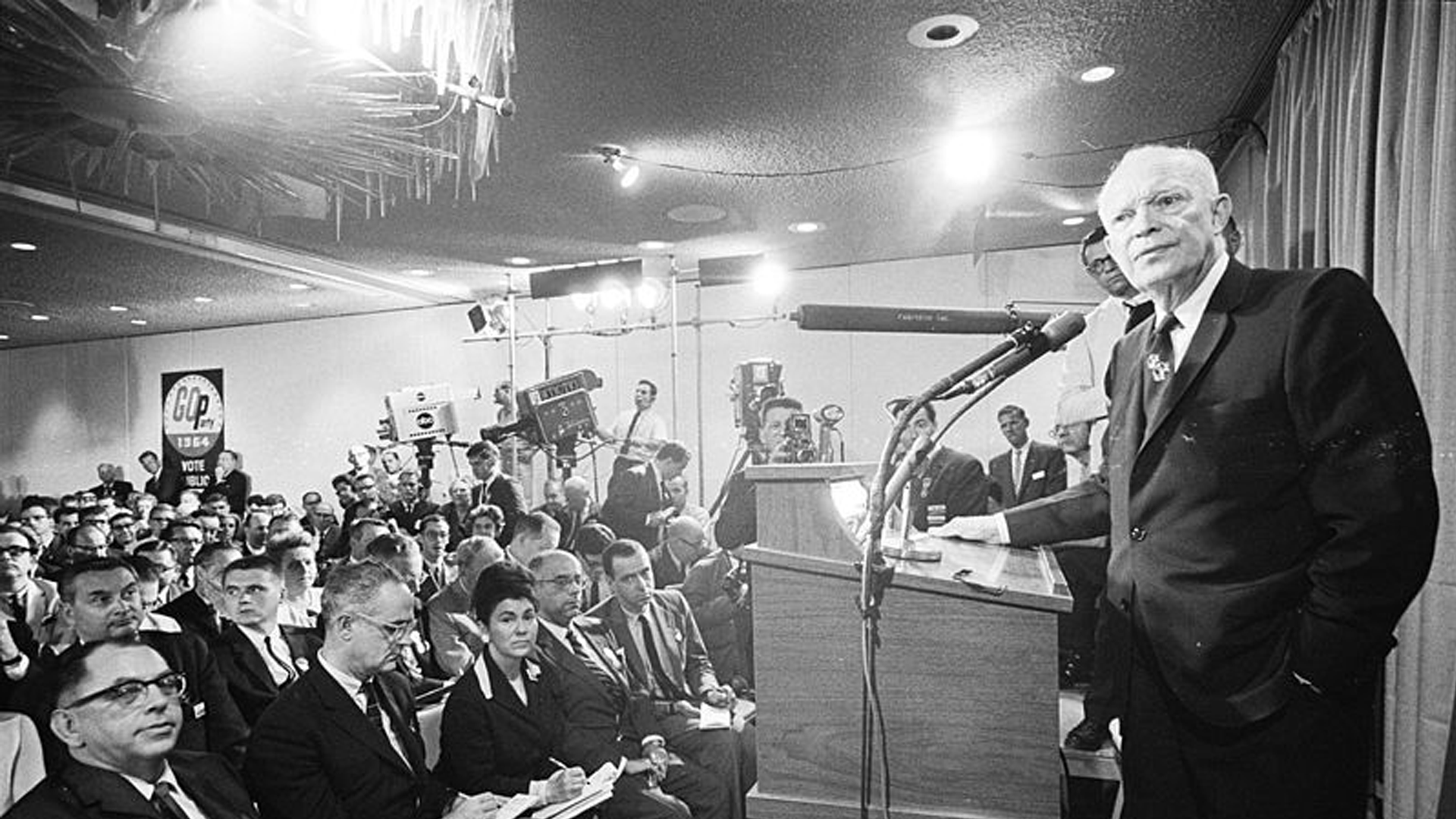
20 Important Names From World War II You Should Know
Key Players From World War II (For Good or Bad)World…
By Cathy Liu Feb 7, 2025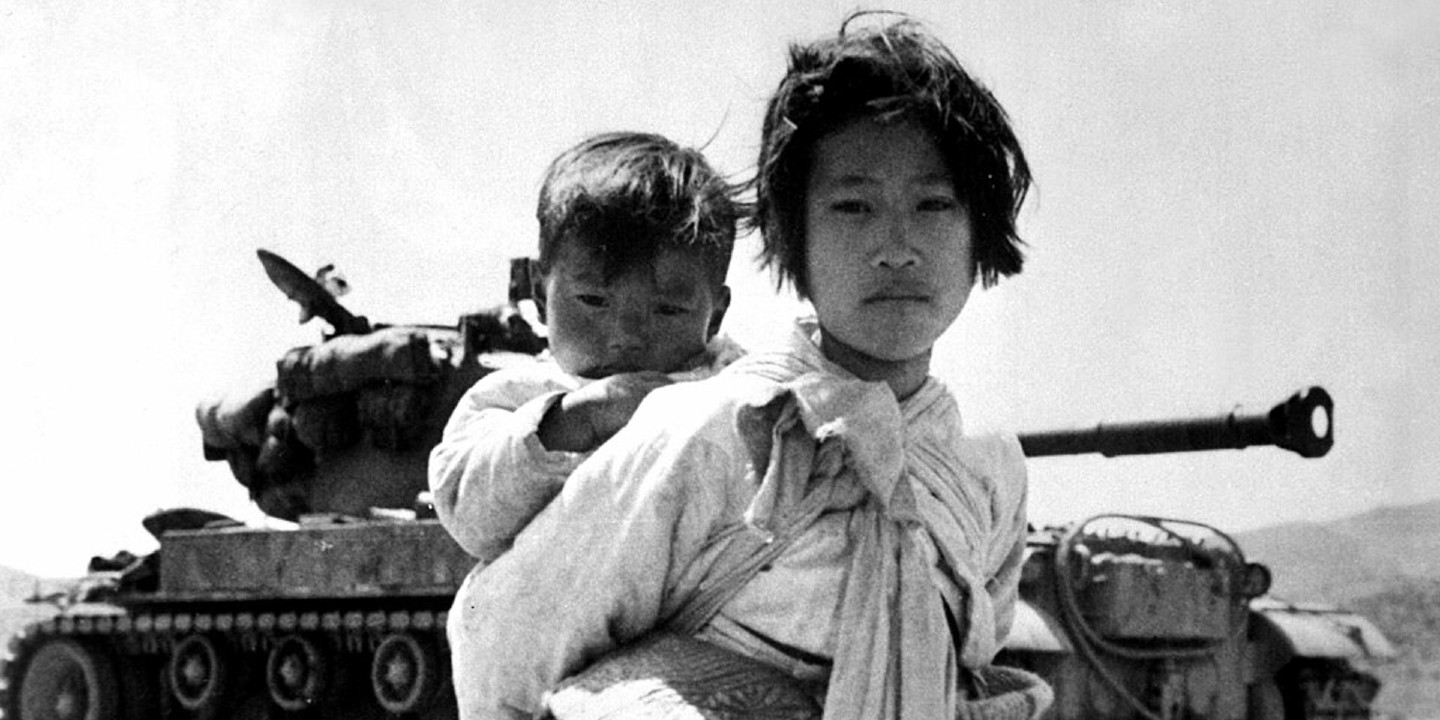
Everything You Need To Know About The Korean War
It Shaped More Than Just A CountryThe Korean War is…
By Emilie Richardson-Dupuis Feb 8, 2025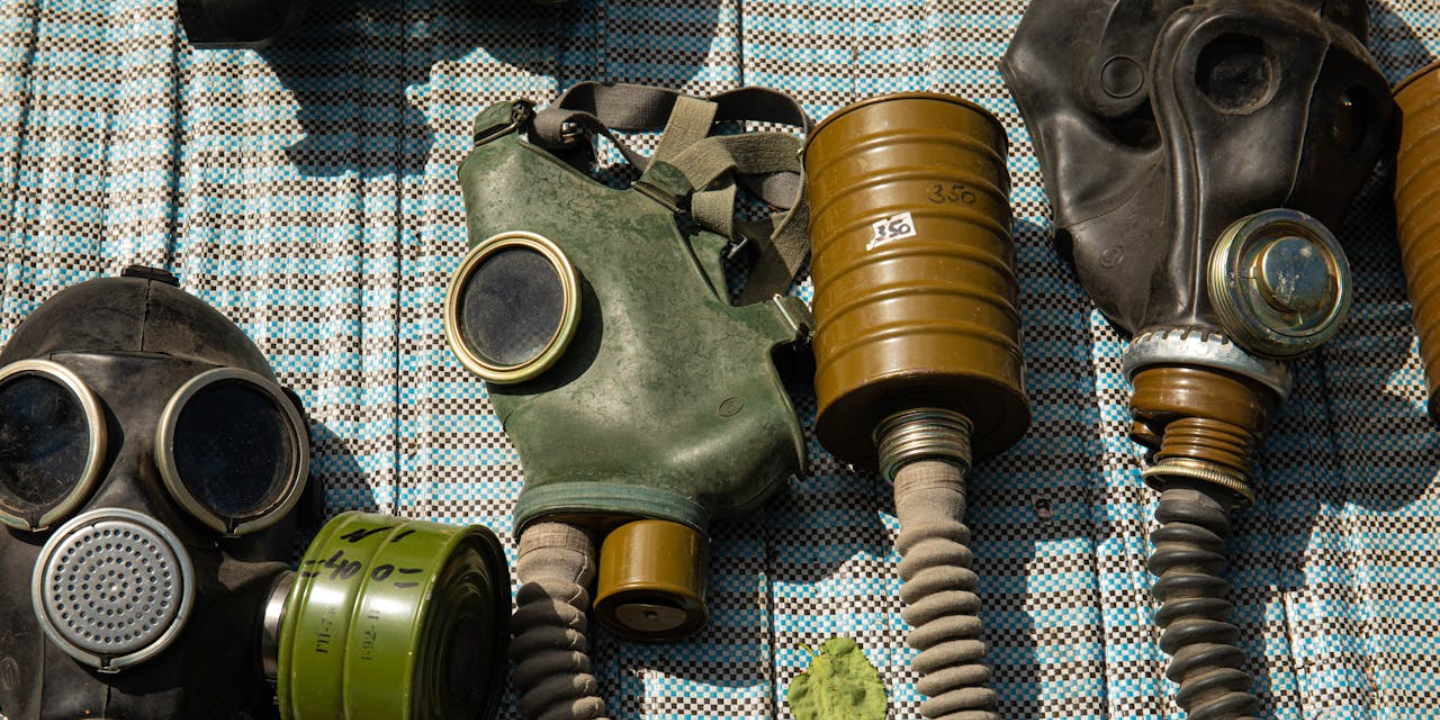
What Did & Didn't Happen During The Cold War
Icing The CompetitionThe Cold War lasted from 1947 to 1991,…
By Farva Ivkovic Feb 8, 2025
The 10 Most Famous Leonardo da Vinci Paintings & 10…
One of the World’s GreatestWhen you think of Leonardo da…
By Maria Cruz Feb 10, 2025
10 Major Differences & 10 Similarities Between World War I…
Two of the Biggest Wars in HistoryWhether you’re a history…
By Maria Cruz Feb 8, 2025
20 Major Events From The Past That Changed Life As…
Earth Shattering HistorySignificant events in history have shaped the way…
By Megan Wickens Feb 8, 2025

